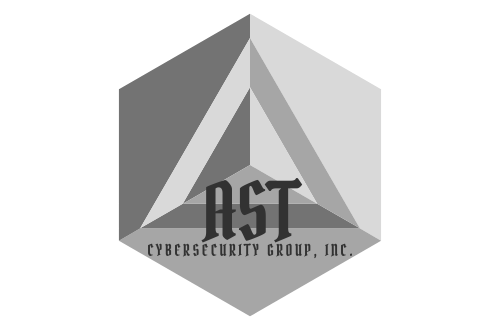In today’s digital age, cyberbullying has unfortunately seeped into the workplace, creating a toxic environment that can harm employees’ well-being and productivity. As a business owner, it’s imperative to understand the complexities of cyberbullying and take proactive steps to identify and address it within your organization.
Join us here at AST Cybersecurity as we delve into the top 10 things business owners need to know about cyberbullying, empowering you to create a safe and respectful workplace for all.
1. Define Cyberbullying
Cyberbullying involves the use of electronic communication to bully or harass an individual. This can include sending threatening or offensive messages, spreading rumors online, posting embarrassing photos or videos, or excluding someone from online groups or activities. Cyberbullying can occur through various channels, including email, social media, instant messaging, and online forums.
2. Recognize the Signs
Cyberbullying can manifest in various ways, and it’s important to be vigilant in recognizing the signs. Some common indicators include:
- Emotional distress: Victims of cyberbullying may exhibit signs of anxiety, depression, low self-esteem, or withdrawal.
- Changes in behavior: Victims may experience changes in sleep patterns, appetite, or social interaction. They may also exhibit decreased productivity or increased absenteeism.
- Reluctance to use technology: Victims may avoid using electronic devices or social media platforms.
- Unexplained physical symptoms: Victims may report headaches, stomachaches, or other physical ailments.
3. Understand the Impact
Cyberbullying can have a devastating impact on victims, leading to a range of negative consequences, including:
- Mental health problems: Victims may experience anxiety, depression, or even suicidal thoughts.
- Physical health problems: Cyberbullying can contribute to sleep disturbances, digestive issues, and other physical ailments.
- Decreased productivity: Victims may struggle to focus on their work, leading to decreased productivity and performance.
- Increased absenteeism: Victims may miss work due to the emotional and physical toll of cyberbullying.
- Damaged reputation: Cyberbullying can tarnish a victim’s reputation, both personally and professionally.

4. Foster a Culture of Respect
Creating a workplace culture that values respect and discourages bullying is essential. This involves:
- Establishing clear policies: Develop and communicate a comprehensive anti-bullying policy that explicitly prohibits cyberbullying.
- Providing training: Educate employees about cyberbullying, its consequences, and how to report it.
- Leading by example: Demonstrate respectful behavior in your interactions with employees and encourage others to do the same.
- Promoting open communication: Create an environment where employees feel comfortable reporting concerns about cyberbullying without fear of retaliation.
5. Encourage Reporting
It’s crucial to provide employees with a safe and confidential way to report instances of cyberbullying. This can include:
- Designated reporting channels: Establish clear procedures for reporting cyberbullying, such as a dedicated email address or hotline.
- Anonymous reporting options: Allow employees to report cyberbullying anonymously if they feel uncomfortable disclosing their identity.
- Prompt investigation: Take all reports of cyberbullying seriously and conduct thorough investigations.
- Appropriate action: Take disciplinary action against perpetrators of cyberbullying, up to and including termination of employment.
6. Provide Support to Victims
Victims of cyberbullying need support and understanding. Offer resources such as:
- Counseling services: Provide access to confidential counseling or employee assistance programs to help victims cope with the emotional impact of cyberbullying.
- Time off: Allow victims to take time off work if needed to recover from the effects of cyberbullying.
- Flexible work arrangements: Consider offering flexible work arrangements to accommodate victims’ needs.
- Ongoing support: Check in with victims regularly to ensure they are receiving the support they need.
7. Monitor Online Activity
While respecting employees’ privacy, it’s important to monitor online activity on company-owned devices and networks to identify potential instances of cyberbullying. This can include:
- Monitoring email and social media: Use monitoring software to track company email accounts and social media activity for signs of cyberbullying.
- Reviewing online forums and chat rooms: Monitor online forums and chat rooms used by employees for inappropriate behavior.
- Conducting regular audits: Perform periodic audits of online activity to identify potential risks.

8. Address Cyberbullying Promptly
When cyberbullying occurs, take immediate action to address the situation. This includes:
- Investigating the incident: Conduct a thorough investigation to gather all the facts.
- Taking disciplinary action: Take appropriate disciplinary action against the perpetrator, which may include verbal warnings, written reprimands, suspension, or termination.
- Providing support to the victim: Offer support and resources to the victim to help them cope with the emotional and psychological impact of the cyberbullying.
- Communicating with employees: Inform employees about the incident and the actions taken to address it.
9. Educate Employees About Online Safety
Provide employees with training on online safety and responsible digital citizenship. This can include:
- Protecting personal information: Teach employees how to safeguard their personal information online and avoid sharing sensitive data.
- Using strong passwords: Encourage employees to use strong, unique passwords for all their online accounts.
- Being mindful of online behavior: Remind employees to be respectful and considerate in their online interactions.
- Reporting suspicious activity: Encourage employees to report any suspicious online activity to their supervisor or IT department.
10. Review and Update Policies Regularly
Cyberbullying tactics and technologies are constantly evolving, so it’s important to review and update your anti-bullying policies regularly. This ensures that your policies remain effective in addressing new forms of cyberbullying.
Cyberbullying is a serious issue that can have a devastating impact on individuals and organizations. By taking proactive steps to identify, address, and prevent cyberbullying, business owners can create a safe and respectful workplace where all employees can thrive. Remember, fostering a culture of respect, providing support to victims, and taking swift action against perpetrators are key to combating cyberbullying and promoting a positive work environment.
Remember, as a business owner, you have a responsibility to protect your employees from cyberbullying. By implementing these strategies and fostering a culture of respect, you can create a workplace where everyone feels safe, valued, and empowered.
Additional Cyberbullying Tips from AST Cybersecurity
- Use clear and concise language in your policies.
- Make sure your policies are easily accessible to all employees.
- Provide regular training on your policies.
- Enforce your policies consistently.
- Be proactive in addressing any concerns about cyberbullying.
By taking a proactive approach to addressing cyberbullying, you can create a workplace where everyone feels safe and respected. To find out more, contact AST Cybersecurity and let us help get your business set up for safety.

